Tom's Hardware Verdict
The Seasonic Prime TX-1600 might not be fully ATX 3.0 ready, but it achieves fantastic performance, high efficiency, and high build quality.
Pros
- +
Delivered full power at 47°C
- +
High overall performance
- +
High average efficiency
- +
Good soldering quality
- +
Quiet operation
- +
ATX 3.0 compatible with up to 1000W
- +
Higher than 70% efficiency with 2% load
- +
Highly efficient 5VSB rail
- +
Low vampire power with 115V input
- +
Tight load regulation at 12V
- +
Great ripple suppression
- +
Good transient response at +12V
- +
Long hold-up time
- +
Accurate power ok signal
- +
Alternative Low Power Mode (ALPM) compatible
- +
Low conducted EMI emissions
- +
Plenty of connectors, including 2x 12VHPWR
- +
12-year warranty
Cons
- -
Not fully ATX 3.0 compatible
- -
Efficiency under light loads could be higher
- -
Power factor needs boosting with 230V input
- -
Above 0.1W vampire power consumption with 230V input
- -
Not so good transient response on the minor rails
- -
12+2 pin PCIe connector instead of 12+4 pin
Why you can trust Tom's Hardware
The Seasonic Prime TX-1600 deserves a place in our best PSUs article, as the second best option, behind the mighty Corsair AX1600i. The latter remains the performance king, but it doesn't have a PCIe 5.0 connector since at the time it was introduced, there weren't 12+4 pin PCIe connectors. Seasonic's engineers did a fine job on this platform, and we are looking for an updated design providing full ATX 3.0 compatibility.
Seasonic's newest additions in its flagship Titanium efficiency TX line are the TX-1600 and TX-1300, two powerful PSUs able to support power-hungry gaming systems and workstations. We will look at the TX-1600 in this review and compare it against strong competitors from Corsair, be quiet, Thermaltake, and other key brands with a strong presence in the high-end PSU market.








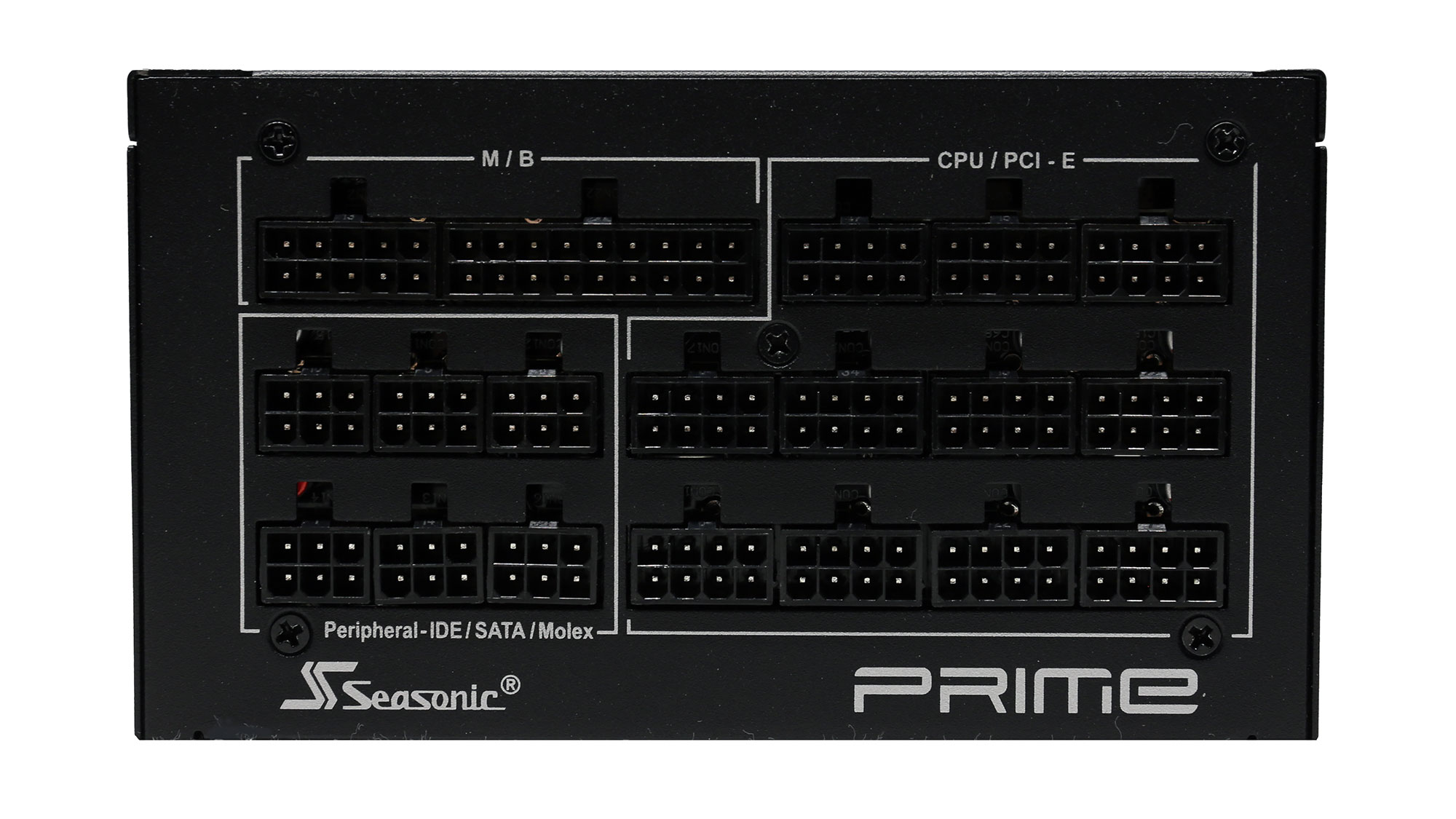



The TX-1600 has large dimensions, measuring 210mm in depth, so you must check if your chassis can accommodate it before you get it. That said, most normal dimension ATX chassis will be compatible. The fully modular cable design will make the installation easy despite the large footprint.
This is a high-end and expensive PSU, which is clearly shown by the exterior design and the quality finish. Moreover, the bundle is rich, including, among others, Velcro straps, zip ties, and a case badge. There is also a pouch for storing any unused modular cables. Given the amount of provided cables, you will surely need it.
Although the TX-1600 is a new PSU featuring two 12VHPWR connectors, it still isn't ATX 3.0 compatible. According to Seasonic, the TX-1600 supports systems where the AIC (Add-in Card) is up to 450W, so the PSU conforms with ATX 3.0 up to 1000W.
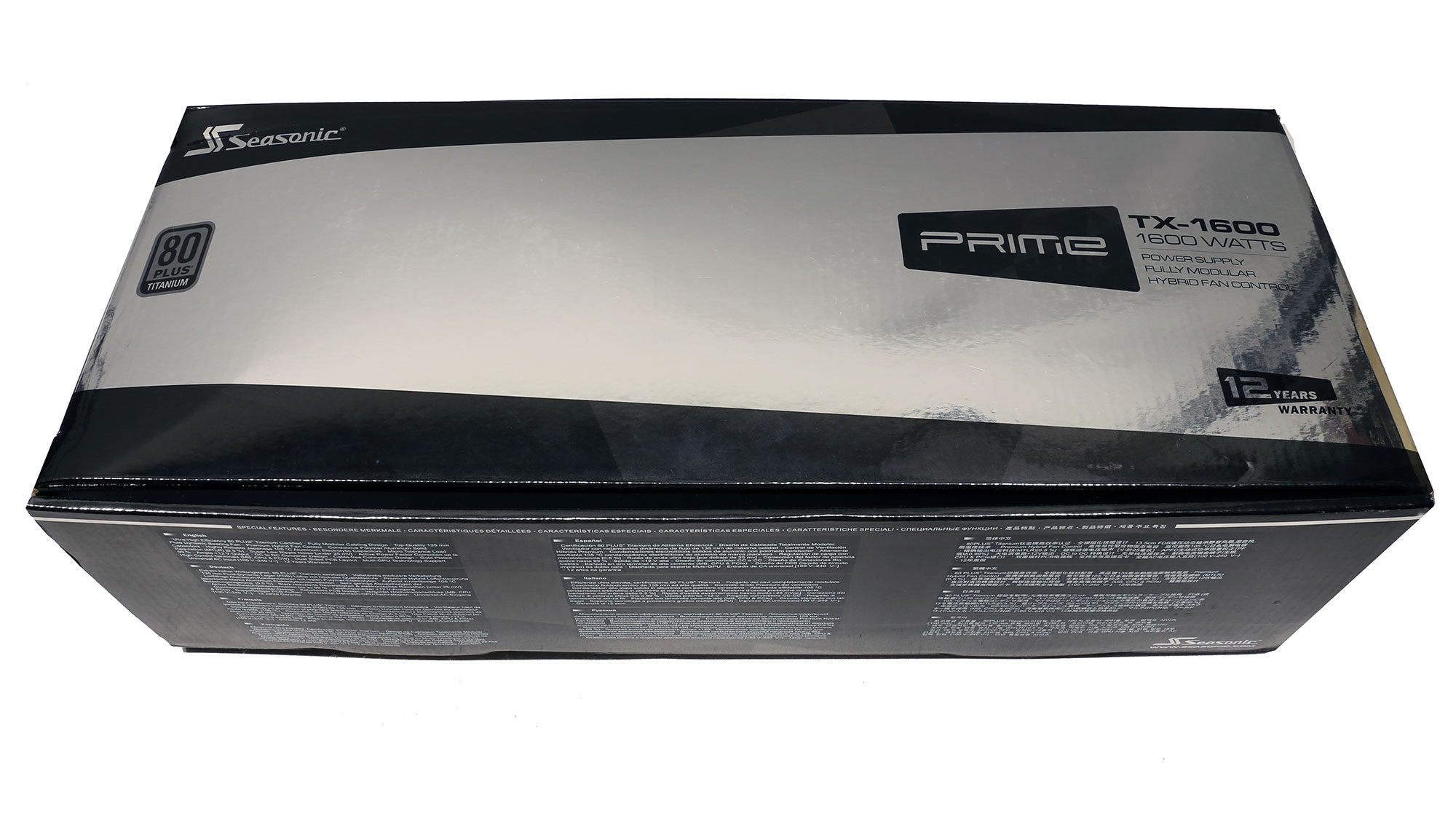








Specifications
|
Manufacturer (OEM) |
Seasonic |
|
Max. DC Output |
1600W |
|
Efficiency |
80 PLUS Titanium, Cybenetics Titanium (91-93%) |
|
Noise |
Cybenetics A (20-25 dB[A]) |
|
Modular |
✓ (Fully) |
|
Intel C6/C7 Power State Support |
✓ |
|
Operating Temperature (Continuous Full Load) |
0 - 50 °C (derating from 100 % to 80 % from 40 °C to 50 °C) |
|
Over Voltage Protection |
✓ |
|
Under Voltage Protection |
✓ |
|
Over Power Protection |
✓ |
|
Over Current (+12V) Protection |
✓ |
|
Over Temperature Protection |
✓ |
|
Short Circuit Protection |
✓ |
|
Surge Protection |
✓ |
|
Inrush Current Protection |
✓ |
|
Fan Failure Protection |
✗ |
|
No Load Operation |
✓ |
|
Cooling |
135mm Fluid Dynamic Bearing Fan (HA13525H12SF-Z) |
|
Semi-Passive Operation |
✓ (selectable) |
|
Dimensions (W x H x D) |
150 x 85 x 210mm |
|
Weight |
3.03 kg (6.7 lb) |
|
Form Factor |
ATX12V v2.52, EPS 2.92 |
|
Warranty |
12 Years |
Power Specifications
| Rail | Row 0 - Cell 1 | 3.3V | 5V | 12V | 5VSB | -12V |
| Max. Power | Amps | 25 | 25 | 133.33 | 3 | 0.5 |
| Row 2 - Cell 0 | Watts | Row 2 - Cell 2 | 125 | 1600 | 15 | 6 |
| Total Max. Power (W) | Row 3 - Cell 1 | Row 3 - Cell 2 | 1600 | Row 3 - Cell 4 | Row 3 - Cell 5 | Row 3 - Cell 6 |
Cables & Connectors
| Description | Cable Count | Connector Count (Total) | Gauge | In Cable Capacitors |
|---|---|---|---|---|
| ATX connector 20+4 pin (620mm) | 1 | 1 | 16-18AWG | No |
| 4+4 pin EPS12V (710mm) | 3 | 3 | 16AWG | No |
| 6+2 pin PCIe (760mm) | 8 | 8 | 16AWG | No |
| 12+2 pin PCIe (760mm) | 2 | 2 | 16-28AWG | No |
| SATA (510mm+150mm+150mm+150mm) | 4 | 16 | 18AWG | No |
| SATA (410mm+150mm) | 1 | 2 | 18AWG | No |
| 4 pin Molex (460mm+125mm+125mm) | 1 | 3 | 18AWG | No |
| AC Power Cord (1360mm) - C19 coupler | 1 | 1 | 16AWG | - |
Plenty of cables are provided, offering many connectors, including a pair of 12VHPWR. The PCIe 5.0 cables can handle 600W, but the PSU's respective outputs are rated at 450W. An issue we spotted here is that the sense pins of the 12+2 pin connector are grounded, informing the graphics card that the PSU can deliver the full 600W, but this is not accurate, according to Seasonic's statement.
We would like to see the extra two pins on the 12VHPWR connector. One of them handles the optional power-ok sideband signal from the Add-in PCIe card. This signal enhances the system's protection. The other sideband signal, routed from the fourth signal pin of the 12VHPWR connector, is the CARD_CBL_PRES which is not supported by the TX-1600.
Get Tom's Hardware's best news and in-depth reviews, straight to your inbox.
Briefly, this signal informs the PSU how many graphics cards are connected, allowing it to decide how to configure the Sense 0/1 sideband signals and set the power levels it will deliver to its 12VHPWR connectors. From the moment the TX-1600 has two 12VHPWR connectors, the CARD_CBL_PRES signal would be helpful.



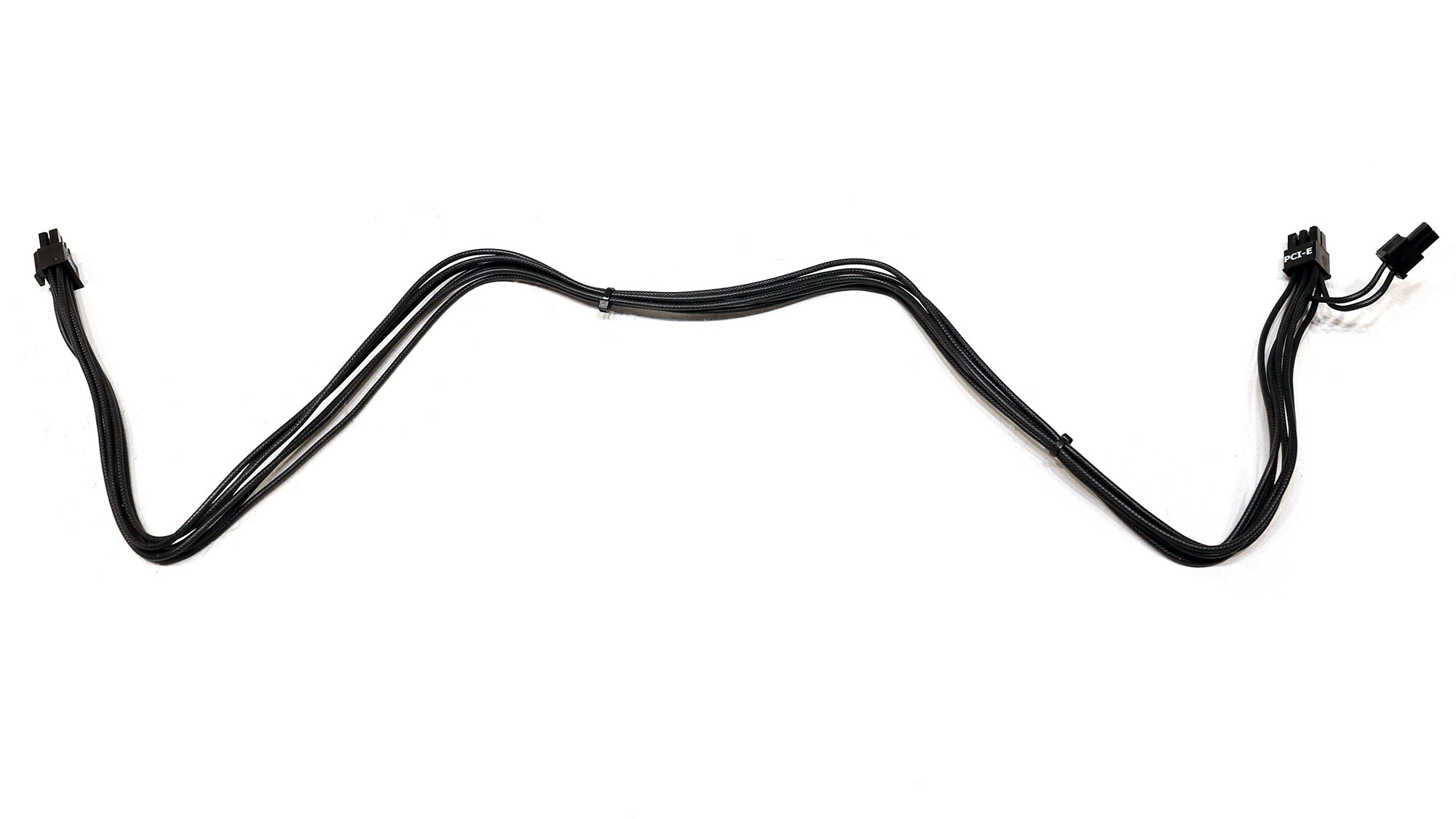

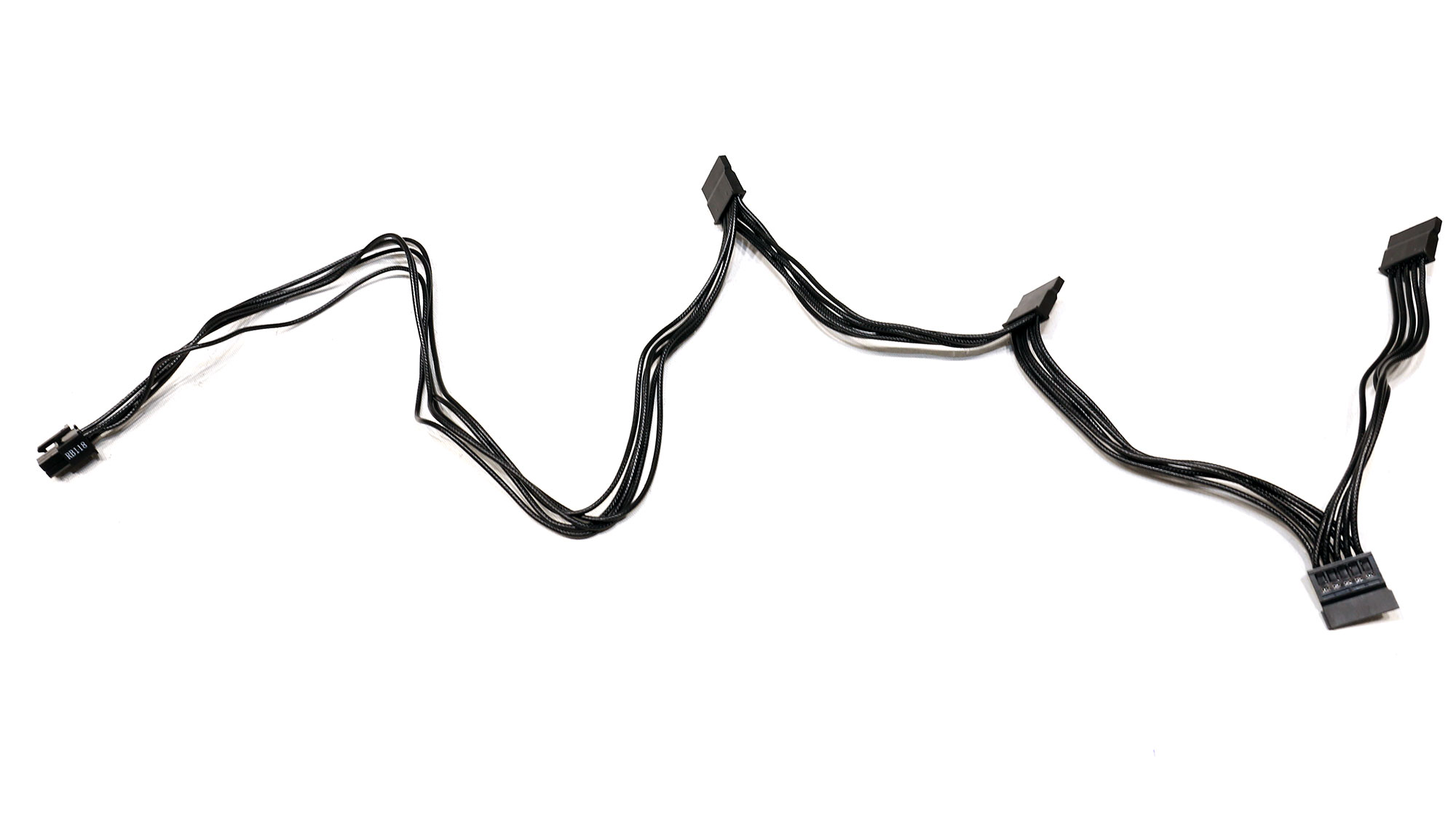

Component Analysis
We strongly encourage you to have a look at our PSUs 101 article, which provides valuable information about PSUs and their operation, allowing you to better understand the components we're about to discuss.
| General Data | - |
| Manufacturer (OEM) | Seasonic |
| PCB Type | Double Sided |
| Primary Side | - |
| Transient Filter | 5x Y caps, 2x X caps, 2x CM chokes, 1x MOV |
| Inrush Protection | 2x NTC Thermistor MF72-20D20M (20 Ohm) & Relay |
|
Bridge Rectifier(s) (Standby Mode) | 1x Shindengen LL25XB60 (600V, 25A @ 113°C) |
|
Rectifier FETs | 4x Infineon IPB60R040C7 (600V, 32A @ 100°C, Rds(on): 0.040Ohm) |
| APFC MOSFETs | 4x Infineon IPA60R099P6 (600V, 24A @ 100°C, Rds(on): 0.099Ohm) |
| APFC Boost Diodes | 2x Infineon IDH10G65C6 (650V, 10A @ 140°C) |
| Bulk Cap(s) | 1x Nippon Chemi-Con (420V, 680uF, 2,000h @ 105°C, KMZ) & 2x Nippon Chemi-Con (420V, 820uF each or 1640uF combined, 2,000h @ 105°C, KHE) |
| Main Switchers | 4x Infineon IPP60R099CP (600V, 19A @ 100°C, Rds(on): 0.099Ohm) |
| Drivers ICs | 2x Silicon Labs Si8233BD |
| APFC Controller | Texas Instruments UCD28070 |
| Resonant Controller | Champion CM6901T2X |
| Topology |
Primary side: Bridgeless, Interleaved PFC, Full-Bridge & LLC converter Secondary side: Synchronous Rectification & DC-DC converters |
| Secondary Side | - |
| +12V MOSFETs | 16x Nexperia PSMN1R0-40YLD (40V, 198A @ 100°C, Rds(on): 1.93mOhm) |
| 5V & 3.3V | DC-DC Converters |
| Filtering Capacitors |
Electrolytic: 7x Nippon Chemi-Con (105°C, W), 1x Nippon Chemi-Con (5-6,000h @ 105°C, KZH), 1x Nippon Chemi-Con (2-5,000h @ 105°C, KZE), 3x Nippon Chemi-Con (4-10,000h @ 105°C, KY), 2x Rubycon (3-6,000h @ 105°C, YXG) |
| Supervisor IC | Weltrend WT7527RA (OCP, OVP, UVP, SCP, PG) |
| Fan Controller | Weltrend WT51F104 |
| Fan Model | Hong Hua HA13525H12SF-Z (135mm, 12V, 0.5A, Fluid Dynamic Bearing Fan) |
| 5VSB Circuit | - |
| Rectifier | 1x Infineon BSC100N06LS3 FET (60V, 36A @ 100°C, Rds(on): 10mOhm) |
| Standby PWM Controller | Power Integrations INN3164C |
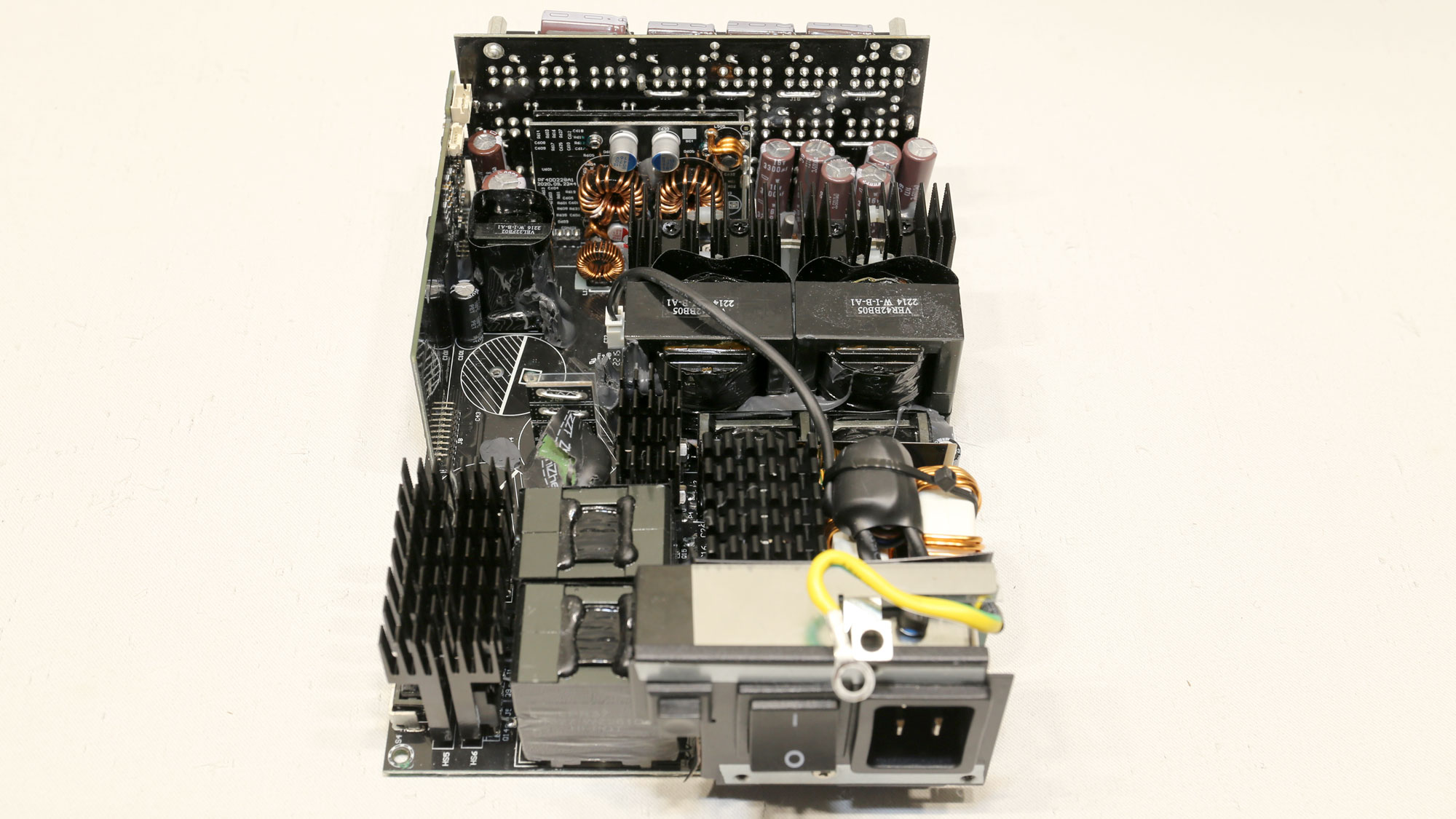





Seasonic used top-notch parts, as expected, in a high-end platform. The sad part is that it didn't go wild in the design section, using a totem-pole PFC and GaN MODFETs. Its engineers preferred a more conventional approach which still can achieve high performance, but it cannot meet the totem pole in terms of efficiency (and performance if we take the AX1600i as reference). It would be nice to see more brands following the totem-pole design and digital controllers, especially in the high-end market. Because only when totem pole APFC overruns the high-end market will we start seeing this highly efficient design in the lower segments, too.





The transient/EMI filter has all the necessary parts, including an MOV and an NTC thermistor and bypass relay combo.
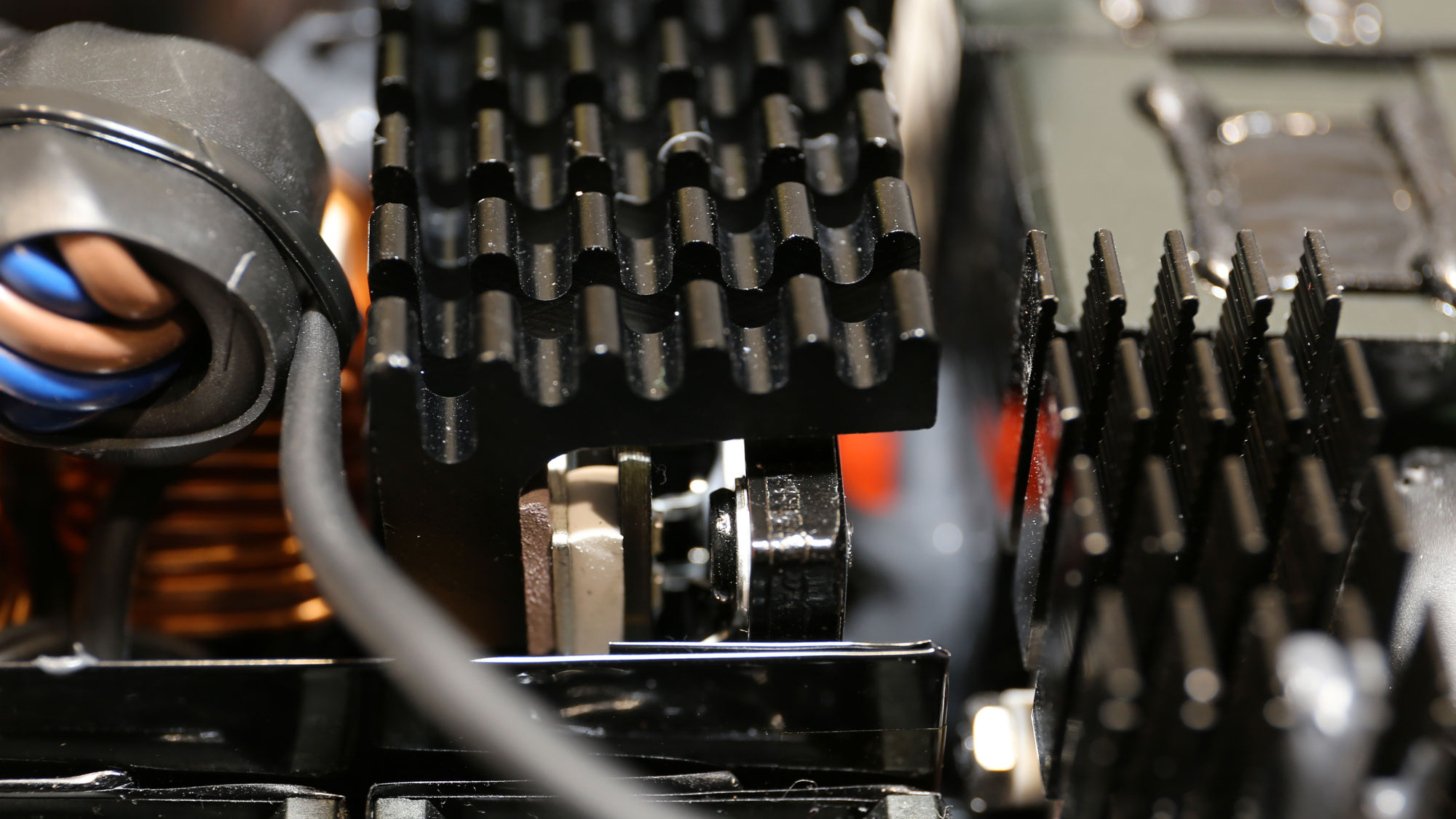

The single bridge rectifier is for the standby rail only, since the PSU uses a bridgeless PFC, where FETs are used instead of the typical bridge rectifiers, for higher efficiency.
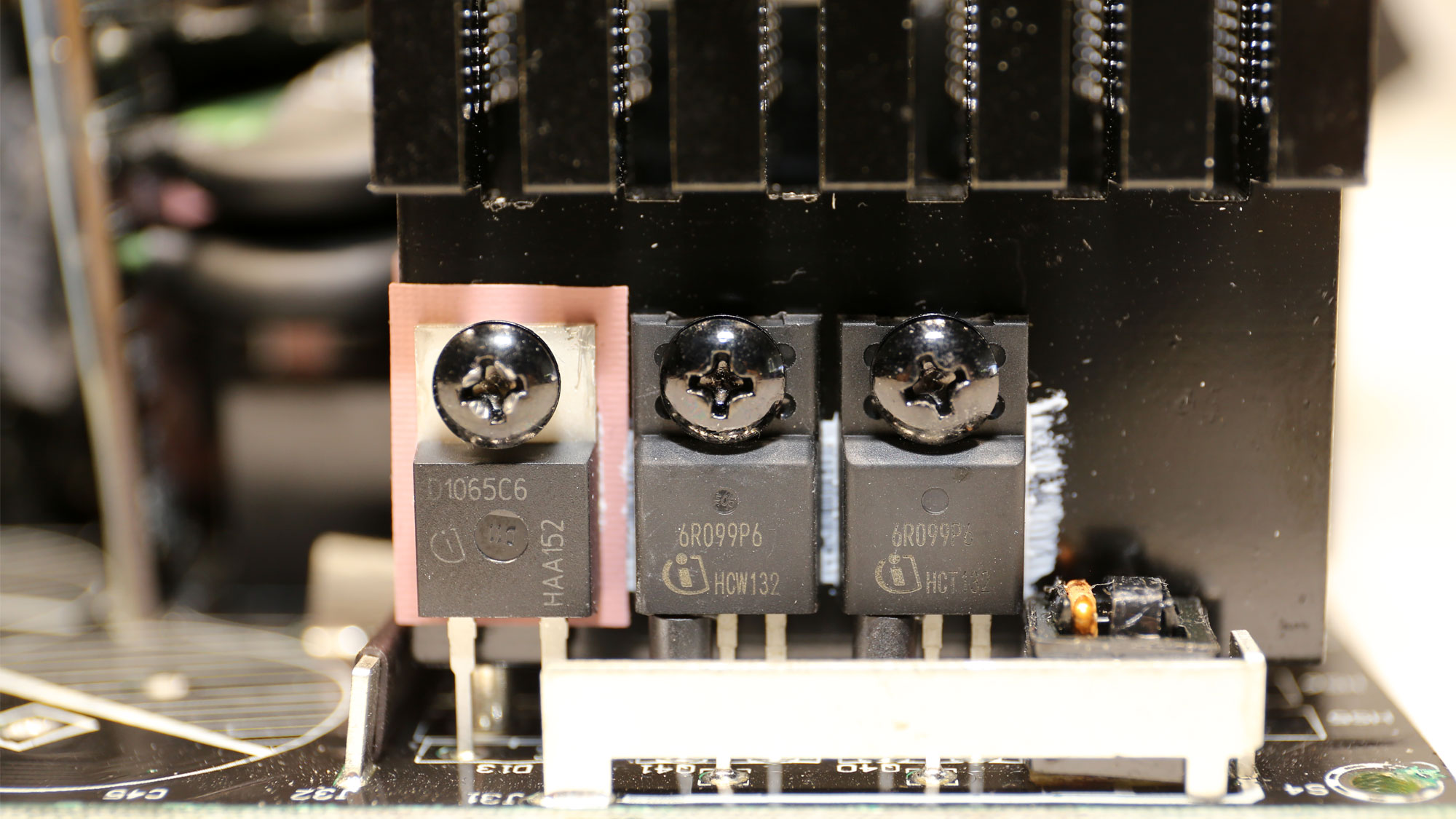




The APFC circuit has four Infineon FETs and two boost diodes because it uses an interleaved design, where two APFC converters operate in parallel, offering lower energy losses. The next best thing to totem-pole PFC is an interleaved PFC. The bulk caps are by Chemi-Con and have enough capacity to meet the ATX spec's hold-up time requirements.


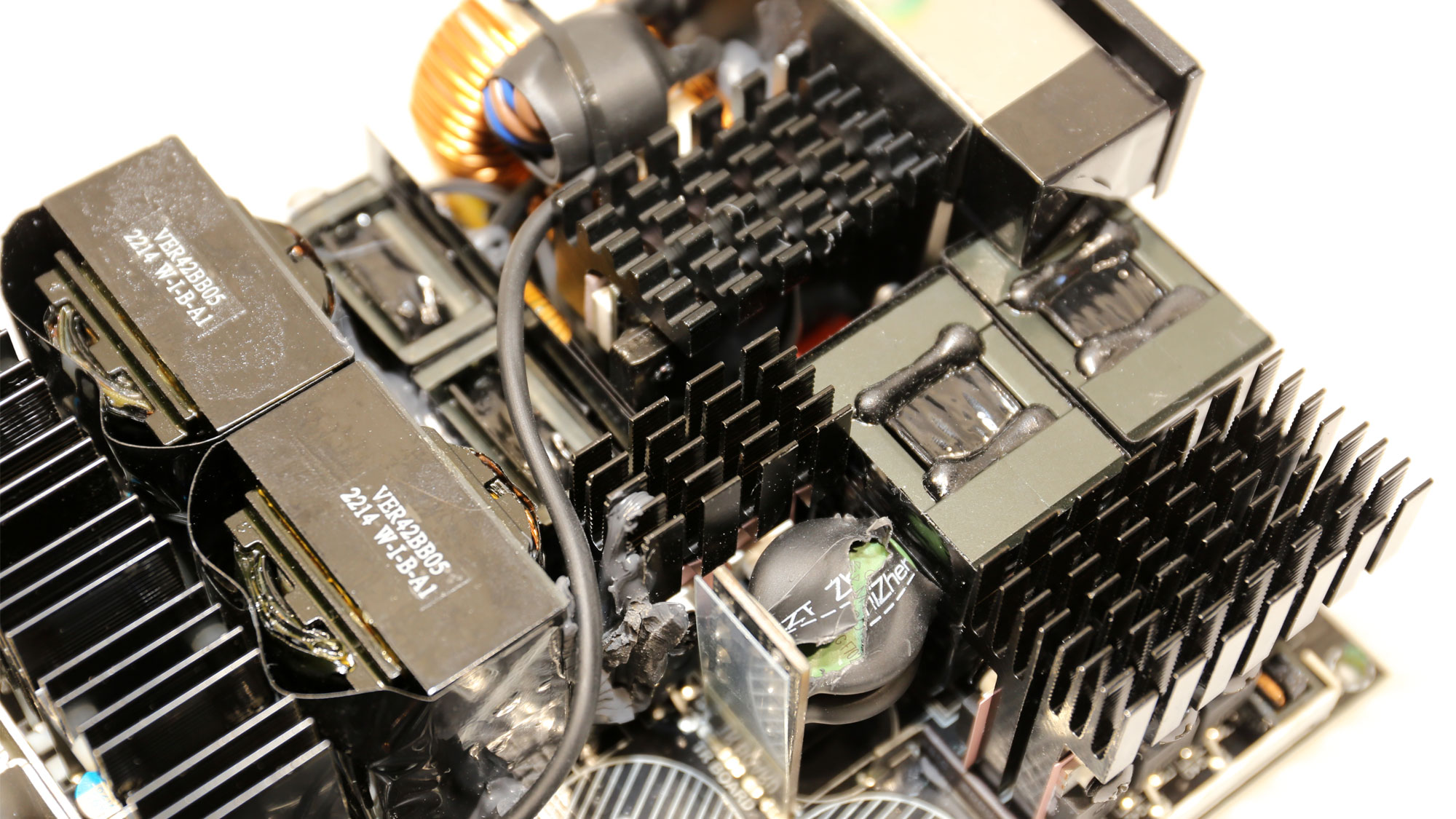


The main FETs are four Infineon IPP60R099CP installed in a full-bridge topology. Two Silicon Labs Si8233BD drive them.

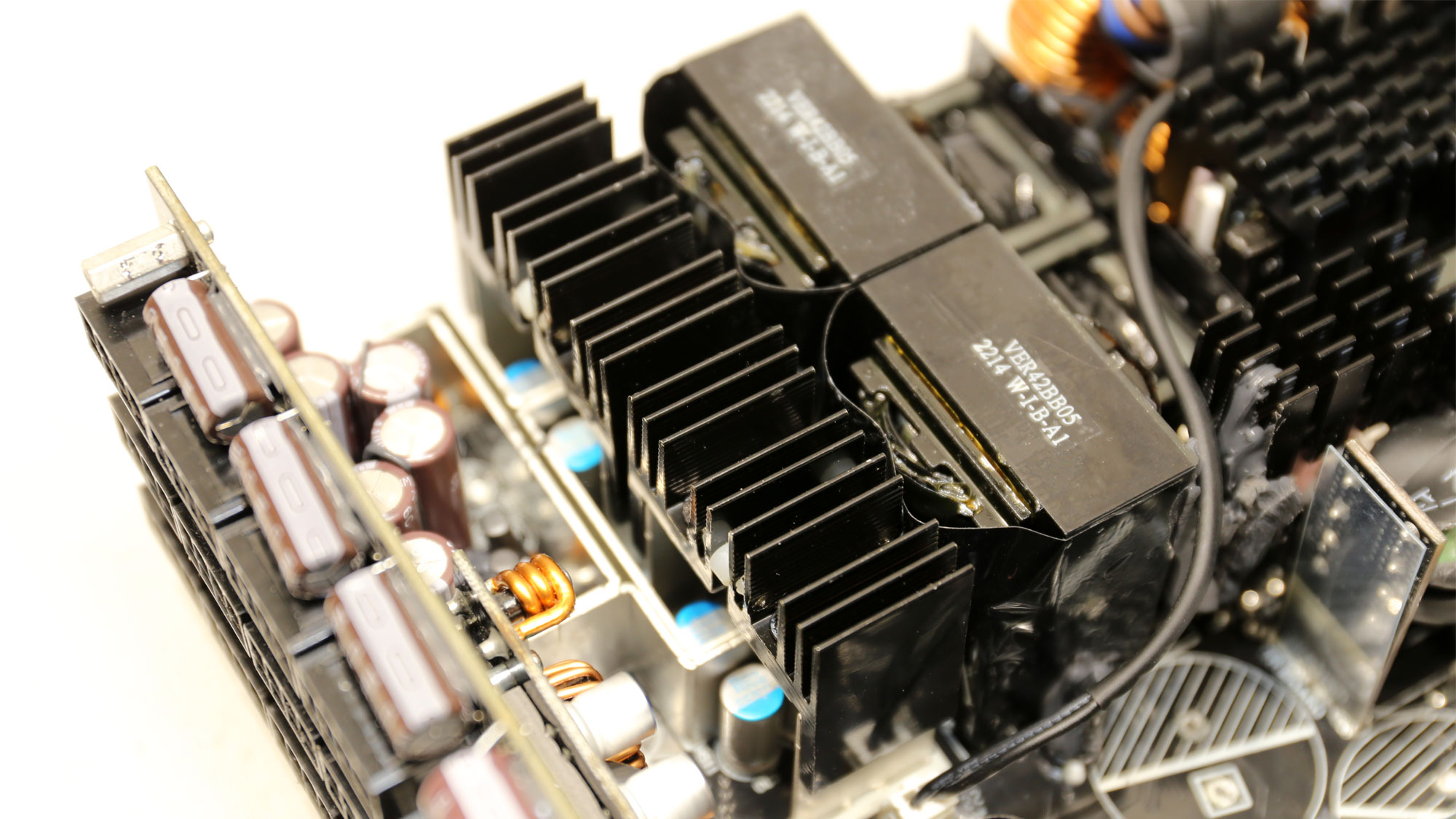


Sixteen Nexperia FETs regulate the 12V rail, while a pair of DC-DC converters utilize the minor rails.

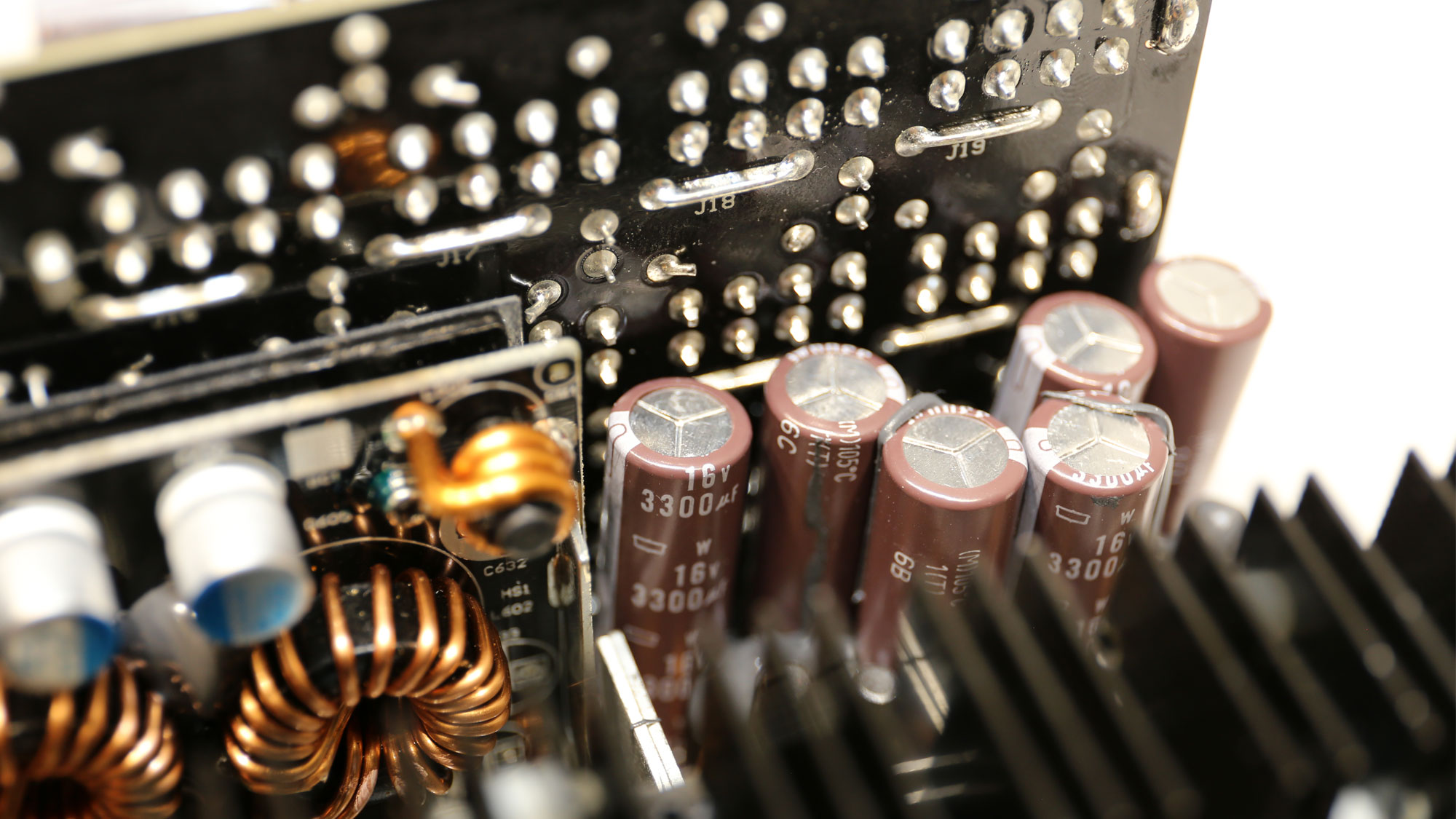


The filtering caps are by Chemi-Con mostly, the electrolytics, and many polymer caps are also used.

The standby PWM controller is a Power Integrations INN3164C IC.
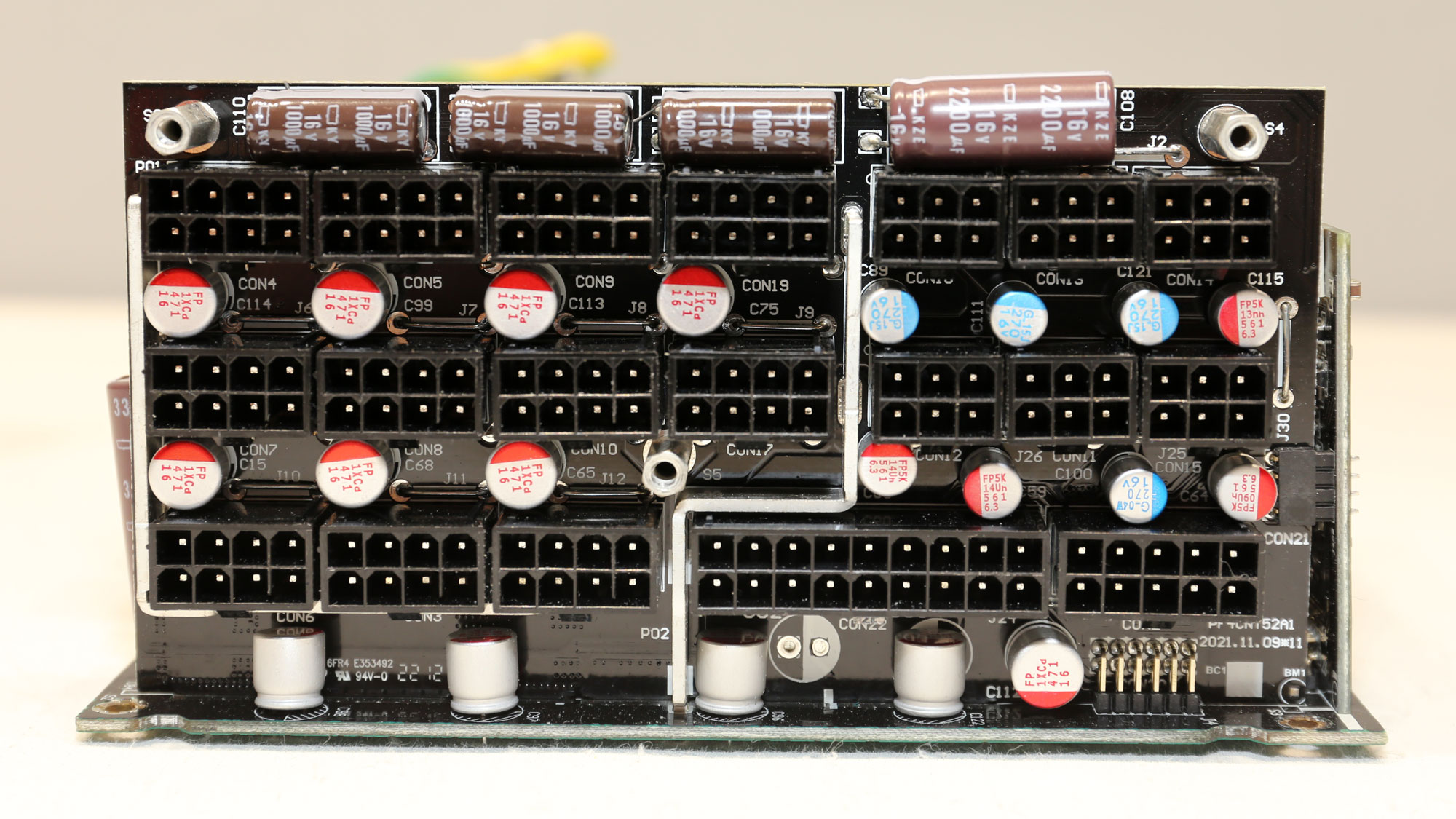


Besides bus bars, we also find several polymer and electrolytic caps on the face of the modular PCB.

The main supervisor IC is a Weltrend WT7527RA IC.


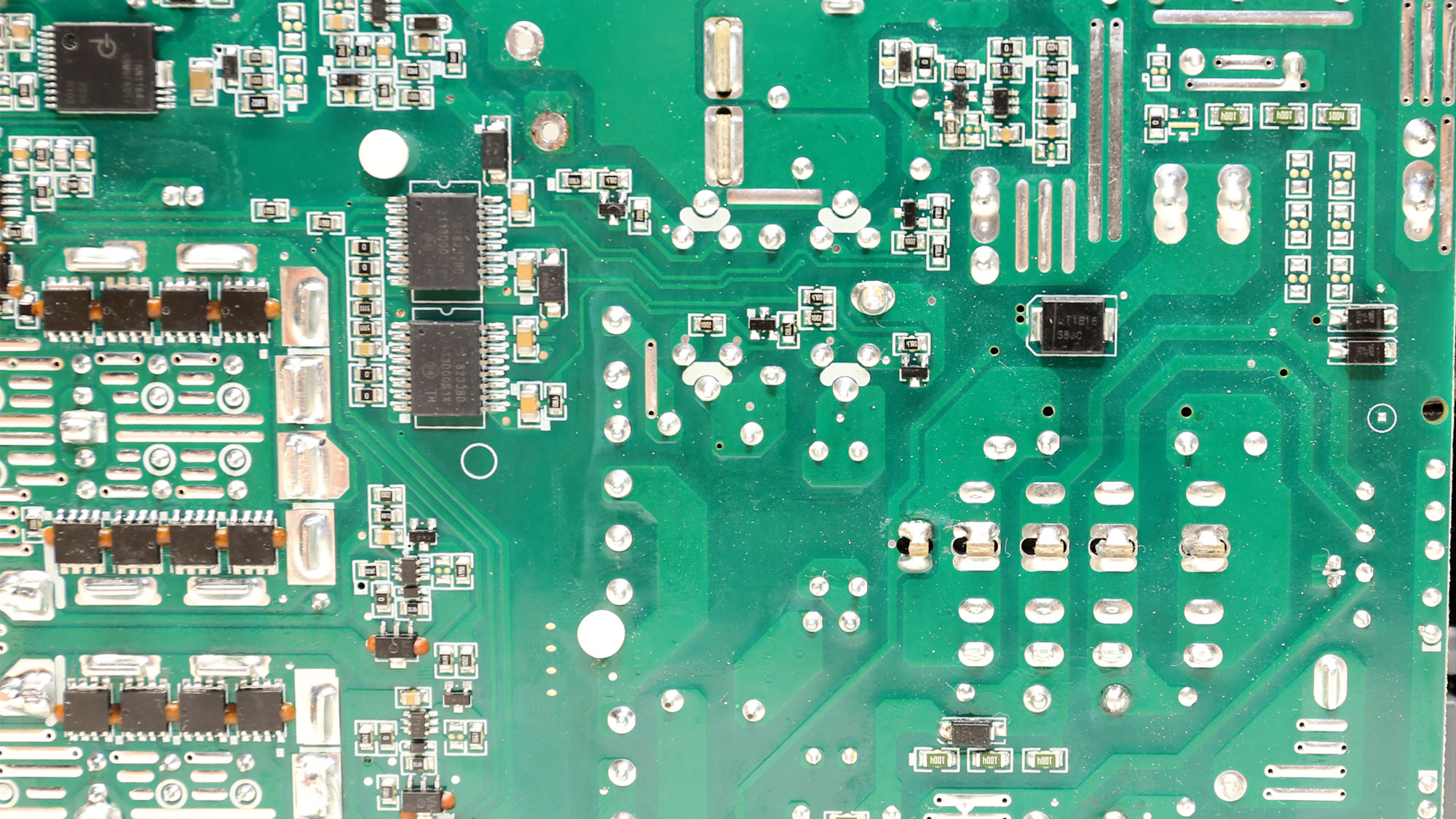


Soldering quality is good.

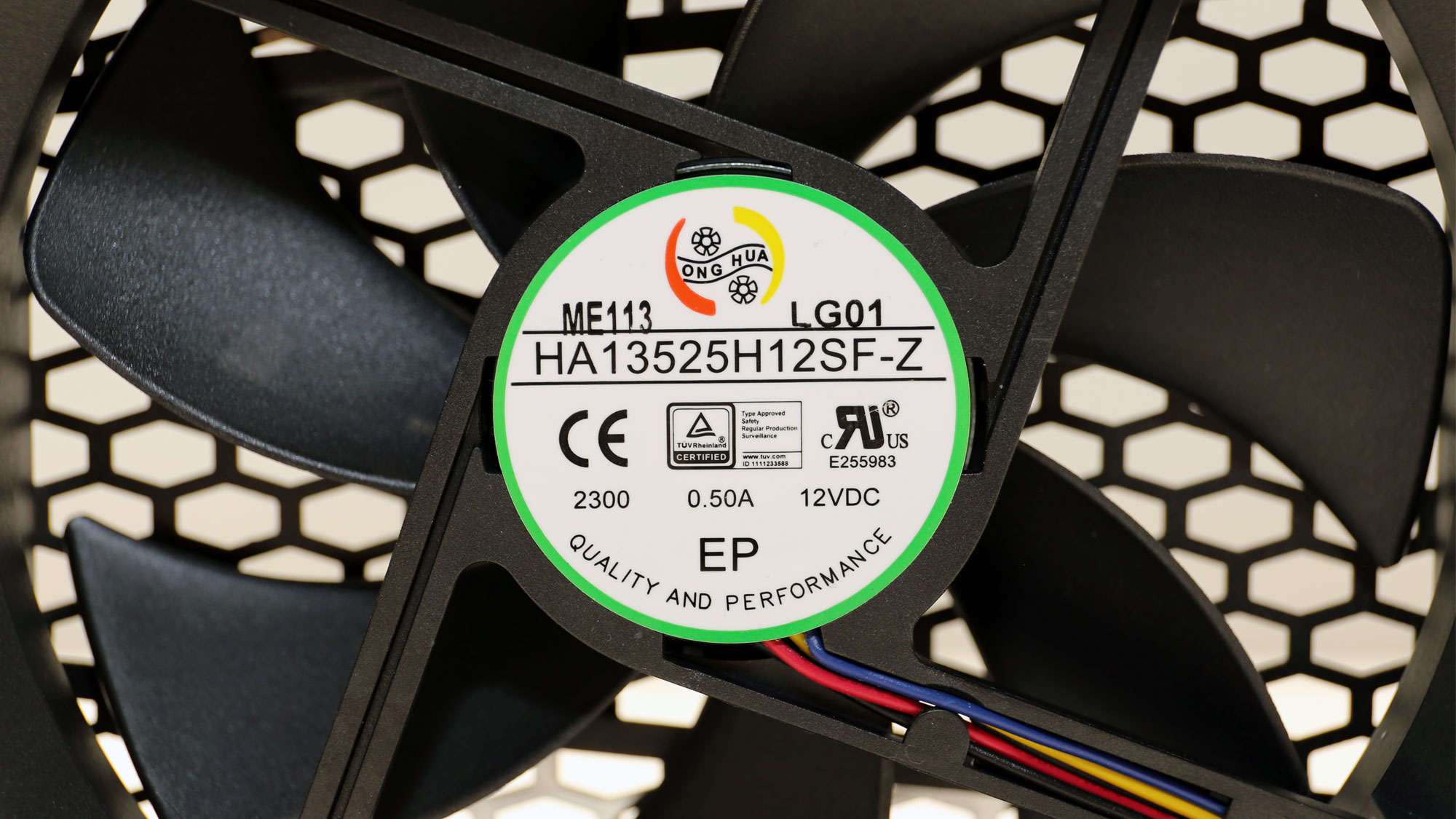
Seasonic used a fluid dynamic bearing fan, provided by Hong Hua.
MORE: Best Power Supplies
MORE: How We Test Power Supplies
MORE: All Power Supply Content
Current page: Specifications and Part Analysis
Next Page Load Regulation, Hold-Up Time, Inrush & Leakage Current, Efficiency and Noise
Aris Mpitziopoulos is a contributing editor at Tom's Hardware, covering PSUs.